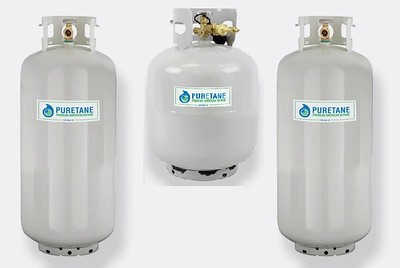
Have you ever noticed that when you use a butane lighter, the metal becomes cold to the touch? Or maybe you’ve experienced the chilling sensation when using a portable camping stove. While it might seem like a simple, everyday occurrence, there’s actually fascinating science at play behind this cooling effect.
In this article, we’ll dive deep into the world of butane, exploring its properties and uses, while shedding light on the scientific principles that govern its temperature drop. Not only will this help satisfy your curiosity, but it will also give you a better understanding of how to safely handle and store butane.
So, let’s embark on this chilly adventure and unravel the mysteries behind butane’s cooling effect.
Understanding Butane
To start our journey, let’s first get to know butane a little better. Butane is an organic compound composed of carbon and hydrogen atoms, with the chemical formula C4H10. It belongs to the class of hydrocarbons called alkanes, which are known for their non-polar nature and low reactivity. At room temperature and pressure, butane exists as a colorless, odorless gas with a slightly sweet smell.
Butane is commonly found in a variety of industrial and household applications. It serves as a fuel source in lighters, portable stoves, and some aerosol products. Additionally, butane is used as a refrigerant, a propellant in aerosol sprays, and as a raw material for producing other chemicals.
Given its widespread use, it’s essential to understand the science that governs its behavior, especially the temperature drop that occurs after its use.
The Science Behind Butane’s Cooling Effect
To grasp the cooling effect of butane, we must first understand the principles of thermodynamics that underlie its behavior. Thermodynamics is the branch of physics that studies the relationships between heat, work, and energy.
The first law of thermodynamics, also known as the conservation of energy principle, states that energy cannot be created or destroyed, only converted from one form to another.
The second law of thermodynamics dictates that heat always flows from a hotter object to a colder one until both reach the same temperature.
Pressure plays a significant role in butane’s cooling effect. When butane is stored in a container, it exists in a pressurized state. In this condition, its molecules are tightly packed together, and its temperature is relatively high.
When the pressure is released – for example, when you ignite a lighter – the butane molecules expand, and the temperature drops. This phenomenon is known as the Joule-Thomson effect.
The Joule-Thomson effect describes the temperature change that occurs when a gas expands or contracts while flowing through a valve or nozzle. This effect is the result of the interplay between the attractive and repulsive forces between gas molecules.
When a gas like butane expands, its molecules move farther apart, reducing the attractive forces between them. This decrease in attractive forces leads to a reduction in the gas’s internal energy, causing the temperature to drop.
Another key aspect of butane’s cooling effect is rapid evaporation. When butane is released from its container, it rapidly changes from a liquid to a gas through a process called evaporation.
Evaporation requires energy, which is absorbed from the surrounding environment, causing the temperature to decrease. This process is known as evaporative cooling.
Evaporative cooling is a common phenomenon that occurs in various contexts, from the simple act of sweating to the functioning of air conditioners. It’s essential to note that the rate of evaporation depends on factors such as temperature, humidity, and the surface area of the liquid.
In the case of butane, the evaporation process is rapid due to the sudden drop in pressure and large surface area exposed when it’s released from its container. This rapid evaporation leads to a significant temperature decrease, resulting in the cooling effect we observe.
Here’s an article about Does Butane Explode Under Pressure?
Real-World Examples of Butane’s Cooling Effect
Now that we’ve delved into the science behind butane’s cooling effect, let’s examine some real-world examples where this phenomenon is evident. Butane lighters are one of the most common applications where the cooling effect can be observed.
When you light a butane lighter, the pressurized butane gas is released, expanding and evaporating rapidly. This leads to a temperature drop in the lighter’s metal components, making it feel cold to the touch.
Portable camping stoves also showcase butane’s cooling effect. These stoves use butane as a fuel source, releasing it from a pressurized canister when ignited.
As the butane expands and evaporates, it absorbs heat from the surrounding environment, causing the stove and canister to feel cold during operation. This is a crucial factor to consider, as it may affect the stove’s performance in colder environments.
Aerosol sprays, such as air fresheners and deodorants, provide another example of butane’s cooling effect. Many aerosol products use butane as a propellant, which helps to expel the active ingredients from the container.
When the spray is released, the butane rapidly evaporates, causing a drop in temperature. This cooling effect can sometimes be felt on the skin or other surfaces that come into contact with the aerosol spray.
Safety Precautions When Handling Butane
Understanding the cooling effect of butane is not only fascinating from a scientific standpoint but also essential for ensuring safe handling and usage. Proper storage and handling of butane canisters are crucial to prevent accidents and injuries.
Store butane containers in a cool, well-ventilated area away from direct sunlight and heat sources. This helps to minimize the risk of leaks or explosions due to temperature fluctuations.
When using butane in confined spaces, such as tents or small rooms, ensure adequate ventilation to prevent the build-up of dangerous gas concentrations.
Additionally, be cautious when handling butane-powered devices, as the cooling effect can lead to cold-related injuries, such as frostbite. If you suspect that you’ve been exposed to extremely cold temperatures due to butane usage, seek prompt medical attention.
Conclusion
In this article, we’ve explored the fascinating science behind butane’s cooling effect. From the principles of thermodynamics to the role of pressure and evaporation, we’ve uncovered the factors that govern this temperature drop.
By understanding these concepts, we can safely and effectively use butane in various applications, from lighting a cozy campfire to freshening up a room with a pleasant scent.
We hope that this comprehensive exploration of butane’s cooling effect has not only satisfied your curiosity but also sparked an interest in further understanding the incredible world of thermodynamics.
Remember, knowledge is power, and understanding the science behind everyday phenomena can help you make informed decisions, ensuring safety and efficiency in all aspects of your life. So, keep exploring, stay curious, and enjoy the fascinating world of science that surrounds us all.

Mike is an experienced propane technician with over 15 years of professional experience in the field. He has dedicated his career to helping customers with their propane needs, from installation to maintenance and repair. Together with Jeremy, he co-founded this website to provide useful information and guidance to customers seeking reliable propane services.



